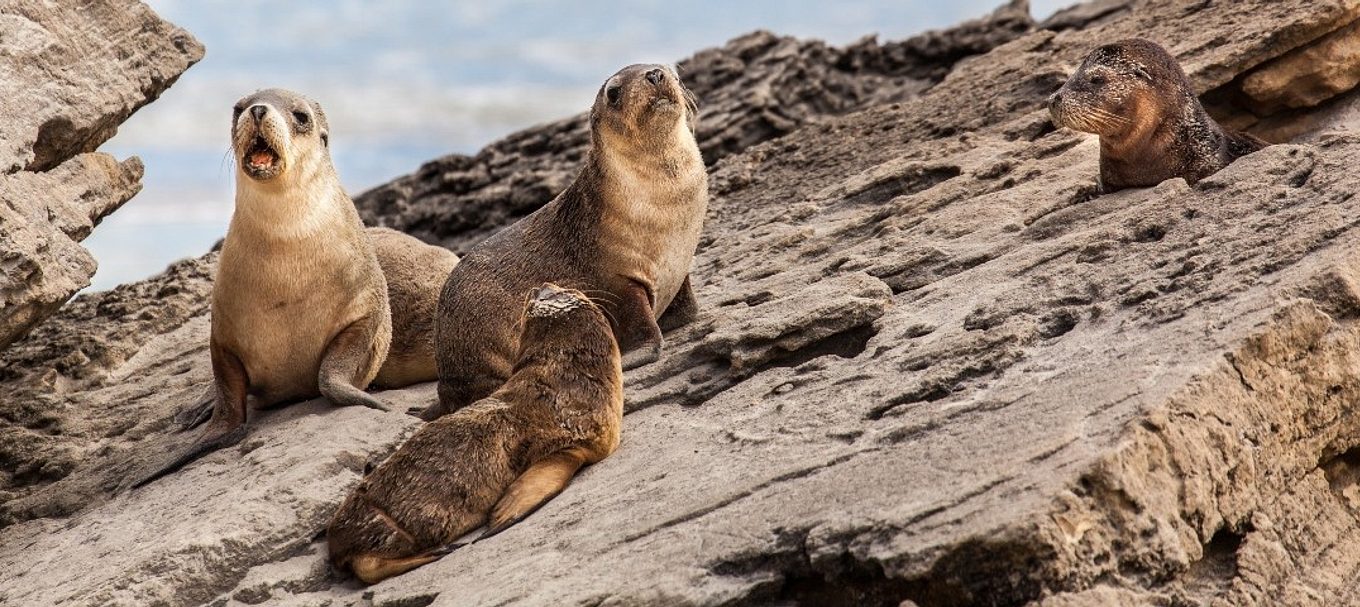
5 of Kangaroo Island’s best wildlife experiences
03 Mar. 2020 5 min read
Bushfires on Kangaroo Island burnt about 200,000 hectares of land – nearly half the island – since they broke out in December 2019.
But as many people remark when they arrive on the island, it’s a big place – bigger than they expected. The third largest island off the coast of Australia, Kangaroo Island is home to unique natural beauty and a wide variety of things to see and do.
There’s still so much to explore, particularly in the national parks that conserve an array of natural environments and provide habitat to an abundant range of wildlife.
These national parks were untouched by bushfires, so make a great addition to any itinerary:
- Baudin Conservation Park
- Beyeria Conservation Park
- Cape Gantheaume Conservation Park and Wilderness Protection Area
- Cape Willoughby Conservation Park
- Lashmar Conservation Park
- Seal Bay Conservation Park
Flinders Chase National Park, located on the fire-affected western end of the island, will be open soon for guided tours.
Kangaroo Island is celebrated for its extraordinary wildlife and has many opportunities to see Australian animals in their native habitats. Here are five of the island’s best wildlife experiences:
1. Australian sea lions
Seal Bay is the only place in the world where you can see Australian sea lions at close quarters and walk on a beach where pups play, bulls fight for supremacy and resting mothers suckle their young.
There are no enclosures or cages here. You can walk to the heart of the sea lion colony on the beach with an experienced guide who will teach you about these endangered animals.
If you prefer, you can set your own pace on the wheelchair accessible 900m (return) boardwalk, which meanders through the dunes to a number of viewing platforms.
2. Kangaroos
Kangaroo Island was named for its kangaroos, which have evolved differently from mainland kangaroos since the island was connected to the mainland 9500 years ago.
Kangaroo Island kangaroos often rest during the day under vegetation, coming out to graze in the early morning and late afternoon.
Spot them on the Hog Bay Road from Prospect Hill to Baudin Beach. Take care when parking and ensure that your car is completely off the road when parked.
3. Tammar wallabies
Kangaroo Island has the largest remaining natural population of tammar wallabies. Much smaller than kangaroos, Tammar wallabies have a dark grey coat with reddish-brown arms, feet and flanks, and white cheek stripes.
They’re best seen at dawn and dusk in Cape Gantheaume Conservation Park along the D’Estrees Bay Road up to Wheatons Beach; in the township at Nepean Bay, via Western Cove Road; and in Baudin Conservation Park. Access to the carpark is along Frenchmans Terrae and south along Binneys Track.
4. Echidnas
Kangaroo Island short-beaked echidnas appear to be abundant across Kangaroo Island due to suitable habitat and no significant predators. They can be found across the island and are generally solitary, feeding day and night and sheltering in hollow logs, under piles of debris, in self-constructed burrows and among tree roots.
Echidnas have exceptional hearing and a good sense of smell. They’ll freeze when disturbed and then curl into a ball, often trying to bury themselves in the leaf litter or soil.
If you find an echidna, watch quietly and patiently from at least 20m away. If they change their behaviour while you are watching then you are probably too close.
5. Dolphins
Kangaroo Island’s pristine waters are home to a diverse and important range of marine life. The island is surrounded by four marine parks that ensure increased protection to approximately two-thirds of its waters.
Pennneshaw’s Hog Bay looks out over Encounter Marine Park and is home to a pod of dolphins that cruise though every day. The perfect spot to see them is from the rocks at the eastern end of the beach, near Frenchmans Rock.
Slow down near wildlife
While travelling on Kangaroo Island, slow down for native wildlife. Please reduce your speed because:
- Echidnas are slow moving animals.
- Goannas need to bask in the sun before becoming active.
- Nocturnal animals are active at night.
- Your headlights can dazzle nocturnal animals.
Wildlife watching guidelines
All native animals in national and conservation parks are wild and should be observed and photographed from a distance. This minimises disturbance to the animal and allows you to observe many of the natural behaviours exhibited by native animals in the wild.
Always remember:
- Stay on the trail.
- Put the animal’s welfare first.
- Move slowly and quietly.
- Observe from a distance.
- Use binoculars for that close-up look.
Wildlife Recovery Fund
Love wildlife? Consider donating to the Wildlife Recovery Fund. This fund supports the re-establishment of habitat for wildlife in the South Australia’s bushfire-ravaged areas.
World Wildlife Day, March 3 2020
Want more information on parks experiences on Kangaroo Island? Check out our guide toWhat’s open now in Kangaroo Island’s parks.You can also download the National Parks of Kangaroo Island Visitor Guide: September 2020to plan your trip.
To keep up to date with fire recovery and park openings check the National Parks and Wildlife Service SAwebsiteorFacebook.





